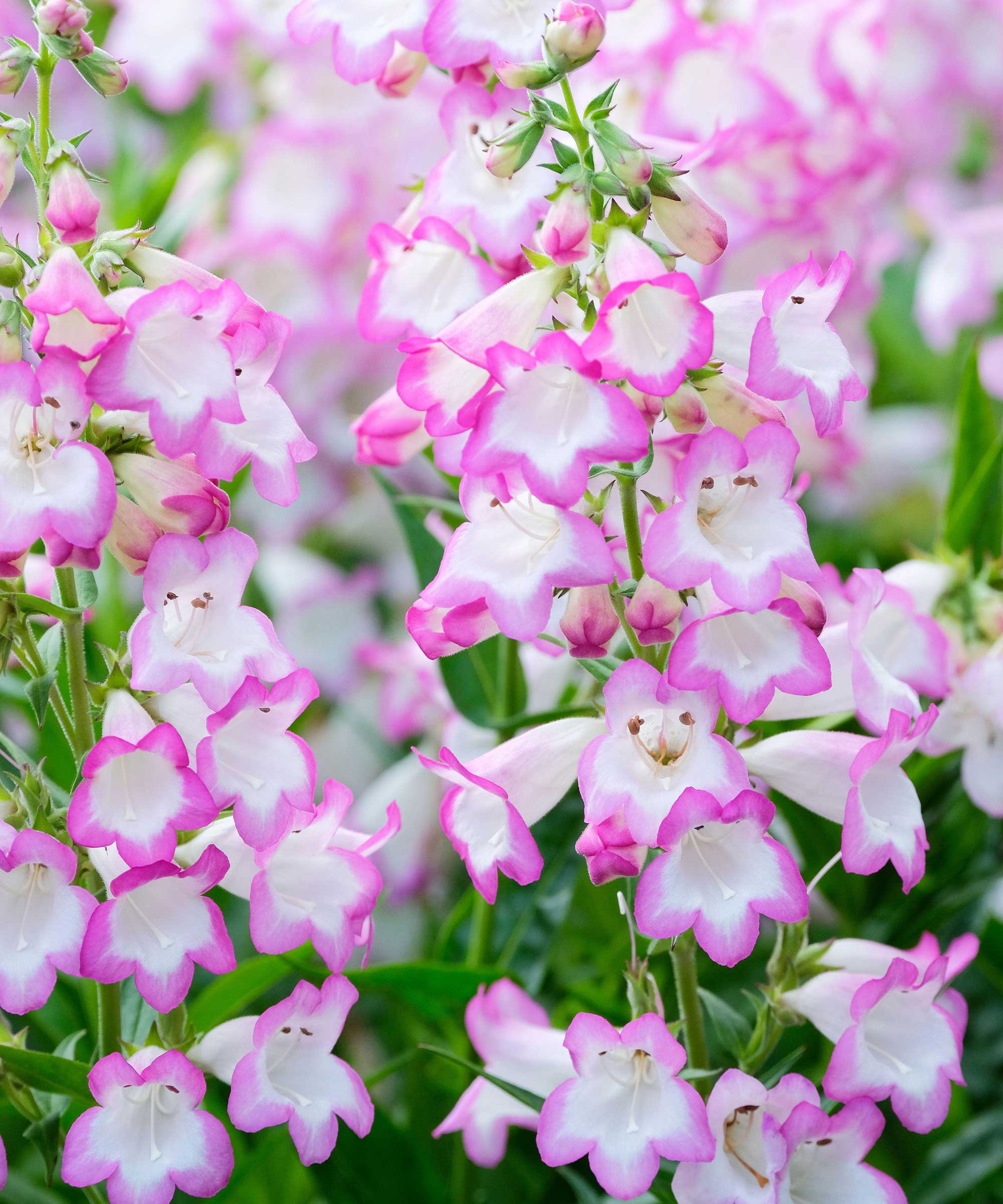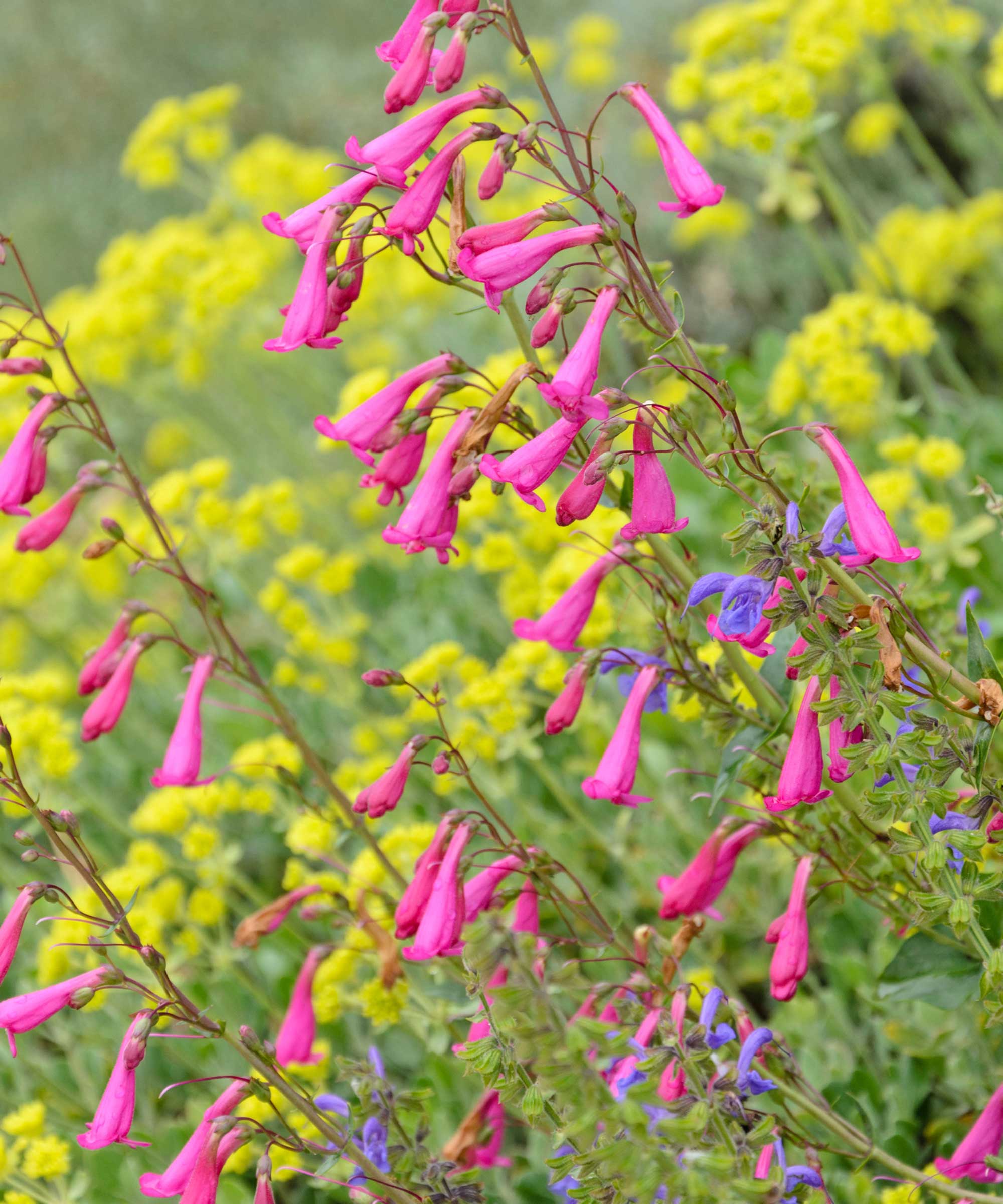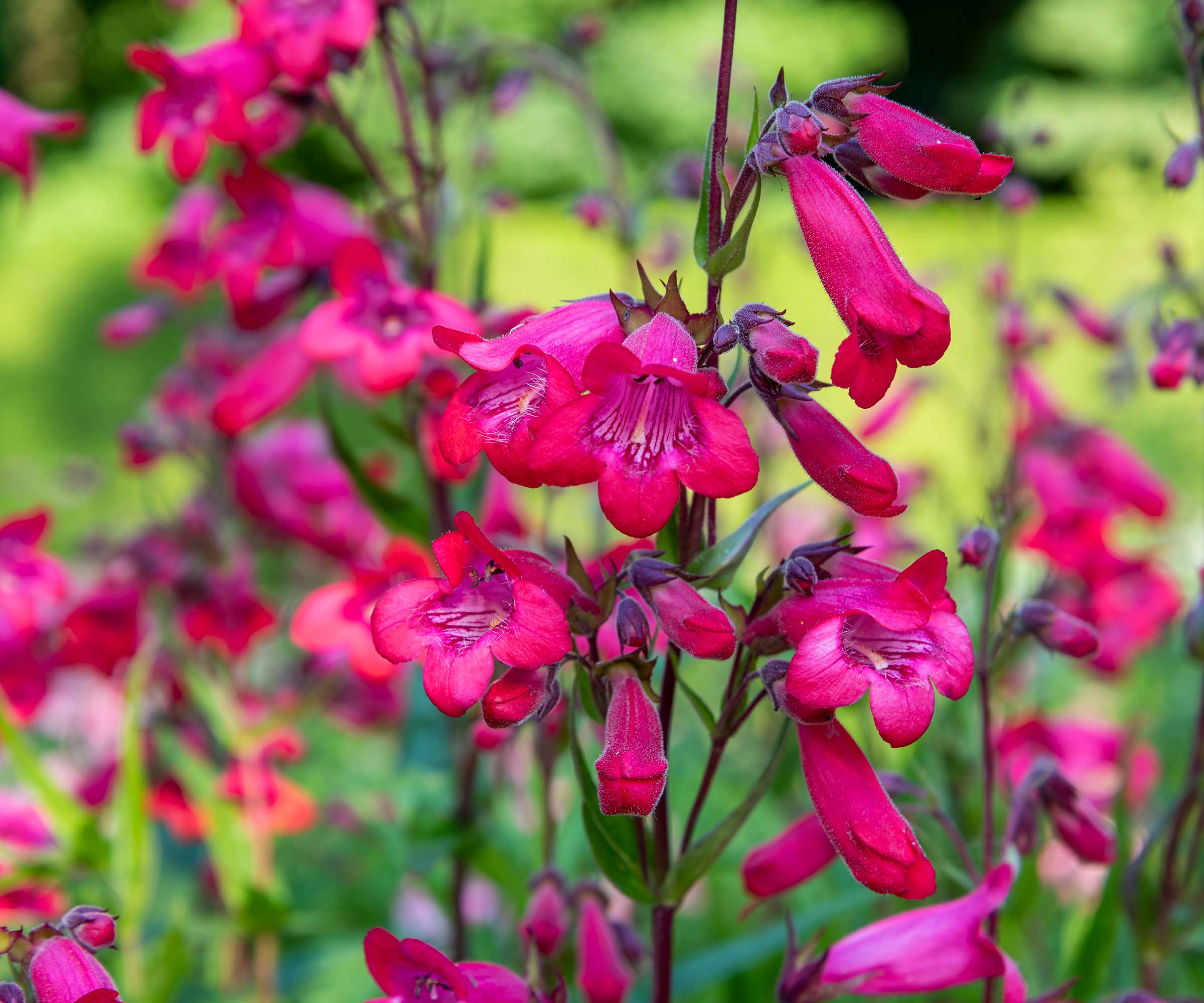
Q: I am growing some penstemon plants (also known as beardtongue) in my backyard and they are blooming beautifully. However, some of the flowers have now passed their prime and are brown and wilted. Should I cut them back?
A: Penstemons bring color and height to borders with their vibrant flower spikes, which inevitably fade over time, as you've seen. Rather than leaving these spent blooms, which can spoil the look of your garden display, you can snip them off – a process known as deadheading. This isn't just beneficial in terms of aesthetics; there are other plus points to this simple task, too.
As with most gardening jobs, technique and timing are key for the best results. Below, gardening experts share their insights, so you can get the most from these pretty summer flowers.

How to deadhead penstemon plants in your yard
Whether growing your penstemon in containers or flower beds, try these tips to keep them looking gorgeous.
The benefits of deadheading penstemon

Naturally, removing spent flowers creates a tidier look for your plants. But there are other reasons to tick this task off your list.
Gardening expert Tony O'Neill says that removing spent blooms can help prevent diseases that might otherwise occur due to decaying plant material. Kiersten Rankel from plant-care app Greg adds how it also prevents them from setting seeds, which can help conserve energy for growth and future blooming. In many varieties of penstemon, giving them a trim will encourage another flush of flowers later in the season, just like when deadheading phlox.
Tony says, 'In my own garden, regular deadheading of penstemons has made a significant difference in their blooming period. I’ve noticed that the plants continue to produce vibrant flowers well into late summer, creating a lush and colorful display. It’s a simple task that reaps big rewards in terms of plant health and garden aesthetics.'
When to deadhead penstemon

Brock Ingham of Bigger Garden recommends deadheading penstemon regularly throughout the blooming season, which usually runs from late spring to late summer or even early fall. 'Wait until you see the flowers starting to fade and wilt before you start deadheading,' he adds.
You can deadhead dianthus, coneflowers, and many other summer-flowering perennials at a similar time.
How to deadhead penstemon

Once most of the flowers on a flower stem have gone over, you can cut the whole stem back to a healthy set of leaves. 'Just be careful not to remove more than a third of the plant at once, or you could stress it out,' warns Victoria Cummins of PlantWhisperer.
'While you're at it, take the opportunity to remove any dead or yellowing leaves,' adds Kiersten. 'After deadheading, the plant will usually produce new flowering stems within a few weeks.'
Towards the end of the growing season, don't be tempted to cut back all the foliage. Leaving some intact will help to protect the plants over winter. In early spring, after the danger of frost has passed, you can give your plants a more thorough prune by cutting back any remaining old growth. 'This rejuvenates them for the upcoming season,' Victoria says.
Top tip: If you have time, and your penstemon is in a prominent position such as a patio pot, you may wish to pick off dead flowers individually from the stem as they occur, leaving the vibrant ones. Then, cut back the whole flower spike when it's past its best.
Deadhead your penstemons easily with these popular pruners that feature a premium titanium steel blade.
FAQs
What tools should you use to deadhead penstemon?
A good pair of sharp and clean pruning shears is ideal for snipping back flower stems. 'It's always a good idea to clean your tools between plants to prevent the spread of diseases,' Kiersten notes.
Should you deadhead all the flowers from your penstemon?
Removing all the flowers from your penstemon can be a deadheading mistake if you want more plants for free. As Kiersten points out, leaving the final flush of blooms at the end of the season allows the plant to set seed, which can be collected for propagation or left for natural reseeding.
While trimming back faded blooms is worthwhile for many garden plants, there are some flowers you should never deadhead, as our dedicated guide explains.







